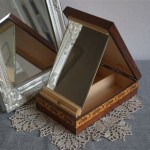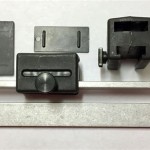How To Install a Wall Mirror
Installing a wall mirror can enhance the aesthetics and functionality of any room. This process requires careful planning and execution to ensure the mirror is securely mounted and aesthetically pleasing. This guide provides a comprehensive walkthrough of the installation process, covering various mounting methods and essential safety precautions.
Assessing the Wall and Mirror: Before initiating the installation, it is crucial to assess both the wall and the mirror. Determine the wall type (drywall, plaster, concrete, etc.) as this will dictate the appropriate hardware and installation method. Measure and weigh the mirror to select fasteners and anchors capable of supporting its weight. Heavy or oversized mirrors may require specialized mounting systems.
Gathering Necessary Tools and Materials: Assembling the required tools and materials beforehand streamlines the installation process. Typically, this includes a measuring tape, pencil, level, drill with appropriate drill bits (depending on wall type), screwdriver, suitable fasteners (screws, mirror clips, adhesive), wall anchors (if necessary), a stud finder (recommended), safety glasses, and work gloves.
Locating Wall Studs: Locating wall studs is highly recommended for secure mounting, especially for heavier mirrors. A stud finder electronically detects the presence of studs behind the wall surface. Mark the stud locations with a pencil. If mounting directly to studs is not feasible, ensure the chosen anchors are appropriate for the specific wall type and mirror weight.
Marking the Mirror Placement: Accurate placement markings ensure the mirror hangs level and in the desired location. Use a measuring tape and pencil to mark the desired top and bottom edges of the mirror on the wall. Employ a level to ensure the markings are perfectly horizontal. For D-ring or wire-backed mirrors, measure the distance between the hanging hardware and the top edge of the mirror to determine the corresponding points on the wall.
Installation Methods: Various methods exist for installing wall mirrors, each suited to different mirror types and wall conditions.
Using D-Rings or Wire: For mirrors equipped with D-rings or wire, measure the distance between the rings or the wire ends. Transfer these measurements to the wall markings, ensuring they are level. Install appropriate fasteners (screws or hooks) at these points, ensuring they are securely anchored to the wall. Hang the mirror on the installed hardware.
Utilizing Mirror Clips: Mirror clips offer a discreet and secure mounting solution. These clips are typically installed along the bottom and sides of the mirror. Mark the clip locations on the wall, ensuring they align with the mirror edges. Secure the clips to the wall using appropriate fasteners. Carefully slide the mirror into the installed clips.
Applying Mirror Adhesive: Mirror adhesive provides a strong bond and is often used for lighter mirrors without pre-installed hanging hardware. Apply the adhesive to the back of the mirror according to the manufacturer's instructions. Carefully position the mirror on the wall, ensuring it aligns with the pre-marked placement. Apply even pressure to the mirror surface to ensure proper adhesion. Temporary supports may be required while the adhesive cures.
Safety Precautions: Observing safety precautions is paramount during the installation process. Always wear safety glasses to protect eyes from dust and debris. Work gloves provide a secure grip and protect hands. When using power tools, ensure the work area is clear of obstructions. If working with a particularly heavy mirror, enlist the assistance of another person for safe handling.
Final Adjustments and Verification: Once the mirror is mounted, make any necessary fine adjustments to ensure it is level and securely in place. Gently tug on the mirror to verify its stability. Clean the mirror surface to remove any fingerprints or smudges.
Special Considerations for Heavy Mirrors: Heavy mirrors require extra attention to ensure secure mounting. Reinforced mounting hardware, such as heavy-duty anchors and screws, is essential. Consider using French cleats or J-bars for added stability. Professional installation is recommended for extremely heavy or oversized mirrors to ensure safe and proper mounting.
Dealing with Different Wall Types: Different wall types require specific considerations for successful mirror installation. Drywall requires anchors for heavier mirrors. Plaster walls may be brittle, requiring specialized fasteners. Concrete walls require pre-drilling and the use of concrete anchors. Consult with a hardware professional to determine the most appropriate fasteners and anchors for the specific wall type.

How To Hang A Frameless Mirror On The Wall With Pictures

How I Installed A Really Big Mirror Merrypad Diy Network

How To Hang A Wall Of Mirrors The Handyman

Oval Frameless Wall Mirror Installation Fab Glass And

A Mirror Wall For Your Home Gym Dick S Rancho Glass

How To Hang A Frameless Mirror On The Wall With Pictures

How To Hang A Large Or Heavy Mirror

Mirror Installation Without Clips

Residential Wall Mirror Installation Singapore Stylish Modern Looking

How To Hang A Heavy Mirror The Home Depot








